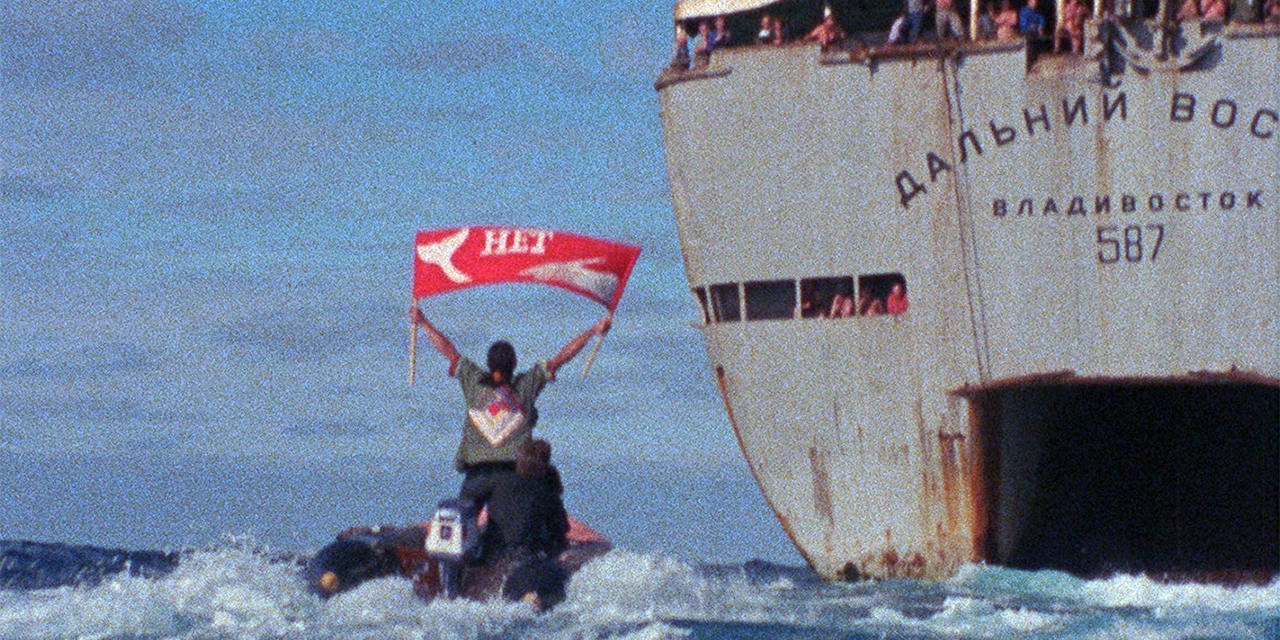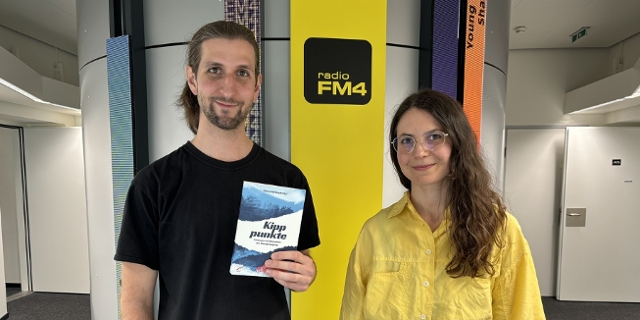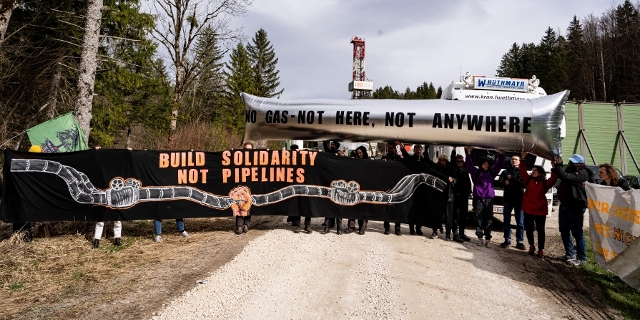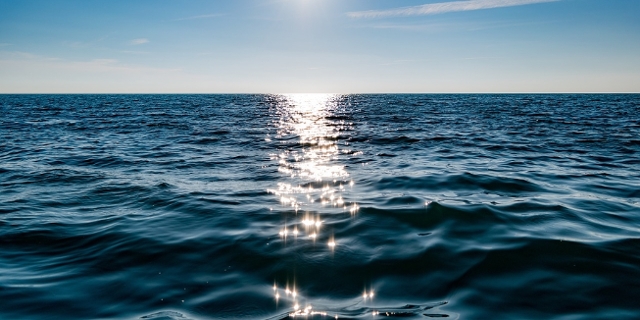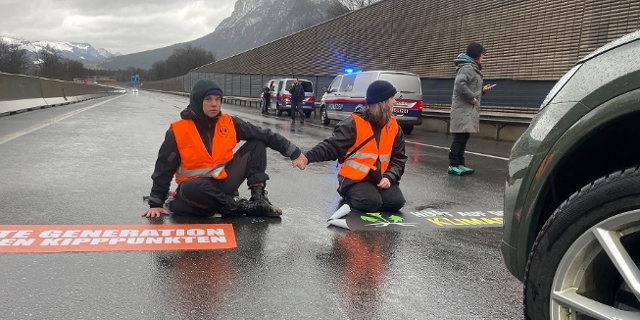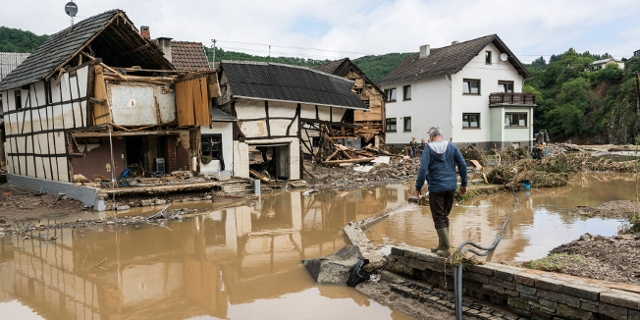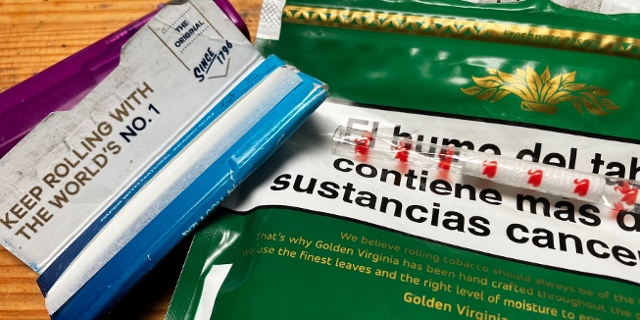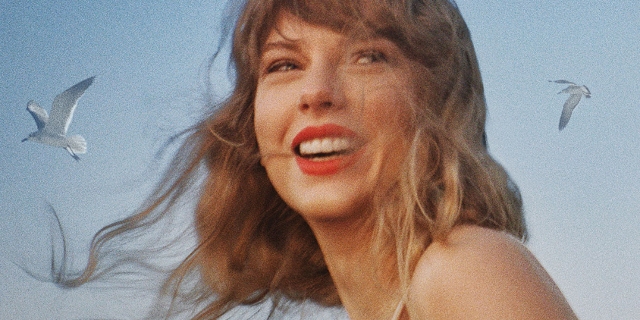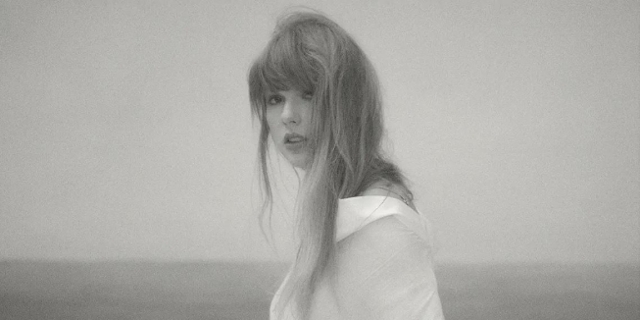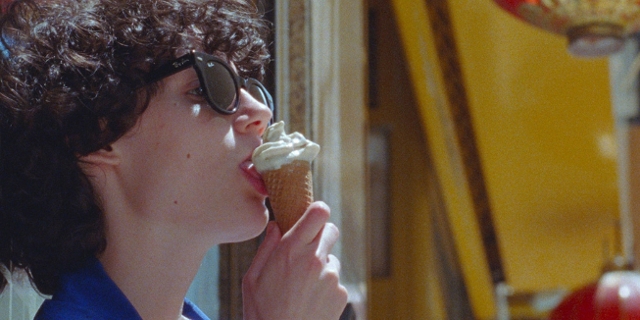The Genesis Of Greenpeace
The modern ecological movement is often criticized for being too straight-laced and disapproving - all oat-milk and down-sizing. But its roots can be partly traced to a much more jovial scene.
Director Jerry Rothwells’ documentary film „How To Change The World“ tells the story the handful of long-haired, pot-smoking, beer-guzzling Canadians who founded Greenpeace before burning out, falling out and watching their anarchic, idealistic foundation transformed into the giant multinational organisation that we see lobbying at the COP25 today.
Rothwell has sifted through images captured on wobbly 16mm film and retold the genesis story of Greenpeace.
Having been handed a copy of the film by a Greenpeace activist, I feared this might be an overly reverential PR piece for an occasionally-divisive ecological lobby group, but I was happily surprised. The film at times hilarious, deeply moving and at times tear-jerkingly sad. It shows how one dream gave birth to a very different sort of dream.
The film is propped up by the passages from the autobiographical writings of Greenpeace founder Bob Hunter. Voiced by Barry Pepper, they evoke the age of counter-culture psychedelia in poetic and nostalgic sentences.
It’s the early 1970s, Vietnam war time, and his home Vancouver is home and refuge to “draught-dodgers, tree-huggers, ship-disturbing unionists, radical students, garbage-dump stoppers, pot-smokers, Buddhists, nudists, back-to-the-landers on the planet. And we were all haunted by the spectre of a dead world.”
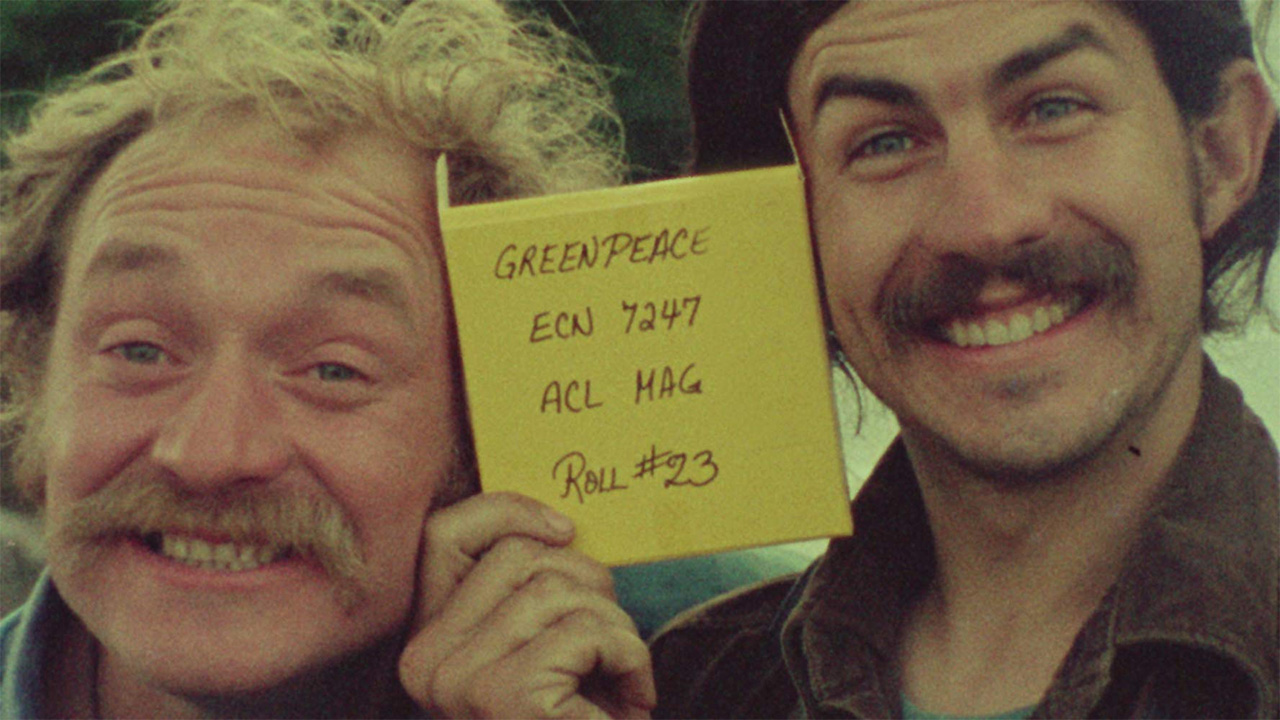
Met Film
Dropping a Mindbomb
In these pre-internet years, Hunter, a journalist, has come up with a concept that he calls a “mindbomb”, which nowadays would mean going viral. His idea is that a single story or an image can encapsulate an important issue and spur the global public into positive action.
So, with a motley crew of long-haired eccentrics, Bob sets off on a rickety boat to try and stop an atomic bomb test on Amchitka island, Alaska, by the United States Atomic Energy Commission
Hunter thinks if he can get a boat to the scene and send pictures to the media, he can embarrass the US into stopping the test. It’s a David vs. Goliath battle, but this David has a gathered colourful team around him.
There’s Paul Watson, who will later found the confrontational Sea Shepherd Conservation Society. He’s the wannabe action man who is considered the more extreme mind in the team. Then there’s Patrick Moore, an eloquent speaker from a private school background who will later do the full Anakin Skywalker turning into Darth Vader and become a climate change denier. And there’s a man who calls himself Walrus who used to trade in illegal magic mushrooms. The crew’s ship, manned by a Han Solo-esque mercenary, has to negotiate freezing, rough oceans and yet it is barely seaworthy.
The Birth of A Banner
Because, as hippies, they greet each other with the word “Peace!”, a crew member called Bill Darnell hoists a sail with the words “Greenpeace”. For the first time, the ecology and anti-war social movements are thereby united under a catchy banner. They radio back reports of their adventure to the press and soon their progress is being followed by thousands.
Ultimately the US coast guards keep them away from the test site and they fail to prevent the atomic detonation. They return to Canada fractious and dejected but are treated as heroes. Within months, the testing programme on Amchitka is cancelled. In their haphazard way they have influenced geo-politics.
Invigorated by the public reception, they search for new campaigns. Against the will of many of his original team, Hunter takes on the industrial whaling industry. They take to sea and in speeding rubber dinghies, try to hinder the harpoon-gunner of a Soviet factory fish off California. A team on one dinghy films, while a second tries getting in his line of fire of the gunner.
The Soviet harpoon operator shoots over the heads of the activists into the whale and into the whale. It’s all captured on camera. The team are sad, sickened but also triumphant. They have the money shot. It becomes one of the most iconic images in the history of ecological activism.
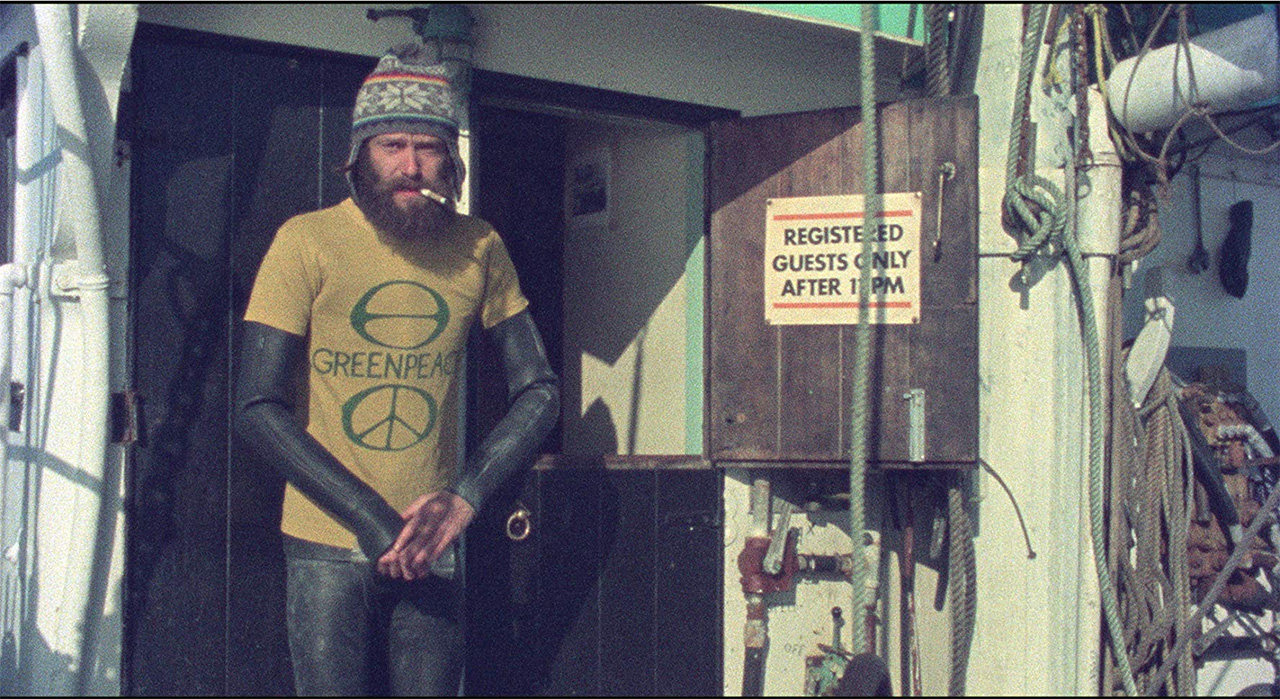
Met Film
Descent Into Madness
But this high-point is also perhaps the moment at which everything falls apart. Those same chaotic characteristics that make the early years free and exciting, will cause this group of friends to fall apart. Fame inflates egos, the lack of official structure leads to a lack of common purpose; everyone thinks they should be in charge.
The gentle but stressed Bob Hunter buckles under the strain; taking the prescription sedative Valium on top of a diet heavy on alcohol, nicotine and cannabis. At points crew members describe him as a “babbling idiot.”
And money is now an issue in a world created by idealists who profess to despise money. It can all only go one way.
Passing the Environmental Baton
Watching the old Greenpeace crew fall apart feels watching a Shakespearean tragedy. Their fate seemed sealed in their earliest days. Hunter is now dead and Moore is championing the interest of fossil fuels.
Meanwhile, the idealistic founding fathers have given birth to something much bigger and much more corporate. But although Greenpeace International has less of the charm of the original Vancouver organisation, it also has less of its flaws. It’s less macho and male-dominated nowadays. Sure, it is less fun but, given the earnestness of the climate situation, perhaps that’s appropriate.
The stern fresh face of Greta Thunberg has replaced the faces of hairy hippies the emblems of climate activism, but her story is a 21st Century reinterpretation of the David and Goliath battle lived through by Hunter and his friends. Jeffrey Rothwell’s film is a compelling piece of ecological history
There’s a screening of How To Change The World on December 4th at 19.30 in the Gartenbaukino in Vienna. Afterwards there will be a discussion with activists from Greenpeace Fridays For Future Vienna
Publiziert am 04.12.2019







